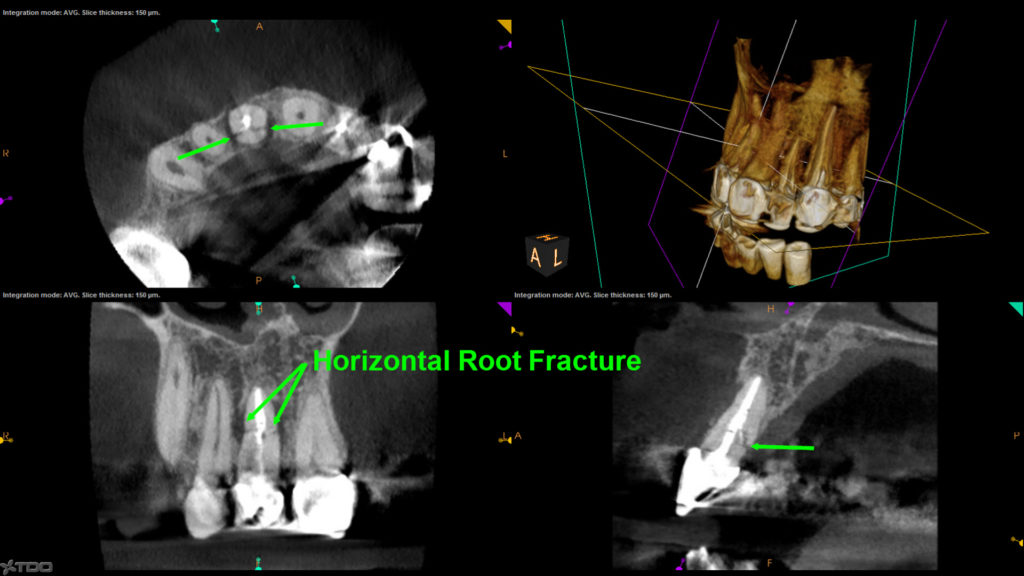Your dentist has sent you to an Endodontist for consultation – You’re already nervous because you’re coming into a new office and meeting a new doctor whom you’ve never met. We perform our examination, review the digital radiographs (x-rays) we take and review them with you chairside. Then, we say something like, “Mrs. Jones to really give you a better evaluation and prognosis regarding this tooth, we need to take what’s called a Cone Beam CT, or a 3-dimensional x-ray.”
Immediately, alarms start going off in your head followed by a stream of random thoughts…. “Why are they taking this? Why can’t they just tell what they need to know from the x-rays? Should I trust this doctor? What is a Cone Beam CT? How much more is it going to cost?” And so on and so forth.
I’ll answer some of those questions in this post and hope to provide you, the patient, with a better understanding of this valuable technology.
Let’s start with defining a Cone Beam CT – or CBCT for short. A CBCT is “a medical imaging technique consisting of x-ray computed tomography where the x-rays are divergent forming a cone.” That’s a mouth full! More simply put, it’s a machine that takes x-rays in multiple angles to create a 3-D representation of the tooth and supporting structures (bone, ligaments, sinus cavity, etc.). Once the computer creates the images, we can now see the tooth in remarkable detail from multiple different planes of view.
So why would we need this type of image to give you an accurate diagnosis? While digital radiographs are a great initial diagnostic tool, they have many limitations. First, they are two dimensional. Here’s the analogy: if you have an apple, and we take a slice out of that apple and look at it, we’re only able to view that “slice.” In comparison, if we had all the slices of the apple and we were able to look through them – we may find areas of rot, seeds, etc, that we wouldn’t see in the single slice of the apple. The CBCT allows us to do the same thing with your tooth. Often times, we can find untreated canals (nerves), detect evidence of cracked roots, or see areas of concern that simply don’t show up on our X-rays, but do non the CBCT. And that may ultimately alter our treatment decisions. Below are some examples.
 Case #1: This patient present with severe pain and swelling around his front tooth (Tooth #8). Traditional x-rays (left image) showed breakdown of the bone (radiolucency) to the side of the tooth, often times indicating an accessory nerve exiting at this point. With this in mind, endodontic retreatment was advised.
Case #1: This patient present with severe pain and swelling around his front tooth (Tooth #8). Traditional x-rays (left image) showed breakdown of the bone (radiolucency) to the side of the tooth, often times indicating an accessory nerve exiting at this point. With this in mind, endodontic retreatment was advised.
Treatment was started and the symptoms improved, but did not go away. After taking a CBCT (below) mid-treatment, this tooth was diagnosed with a horizontal fracture, ultimately dooming the tooth.
Had we taken a CBCT prior to starting this case, we could have eliminated unnecessary treatment and saved the him a significant amount of time and money. This is the value of the CBCT.

Case #2: This patient was referred for us to evaluate for possible recurrent infection around her upper right molar (Tooth #3). She had a draining abscess (sinus tract) on her gum tissue. Traditional x-rays were inconclusive, due to the thickness of the bone and proximity to the sinus cavity. After taking a CBCT, we were able to diagnose an untreated nerve (blue arrow), but more importantly noted complete loss of bone (green arrow) around the largest of the 3 roots, which is highly indicative of an unrepairable vertical root fracture. After seeing this, we opted to not proceed with root canal retreatment and we recommended extracting, pulling, the tooth saving the patient significant amounts of time and money.

How much more is this going to cost? While the cost of the CBCT varies depending on the field of view (i.e., how many teeth we can see), the charge in our office for this service is a flat $150.
Should I trust this doctor? Absolutely! Our decision to request a CBCT when needed is our way of providing you with the highest quality care and most accurate treatment recommendations. By taking that $150 scan, when needed, there are countless times when it changes our treatment decision. Where we may have recommended root canal treatment without seeing a CBCT scan, now we may recommend a different treatment. This invariably saves you both TIME and MONEY that may have been otherwise wasted on needless treatment or treatment that would have been doomed to fail based on the limited information from a traditional x-ray.
In summary, if your endodontist requests a CBCT, rest assured it is to provide you with the most accurate diagnosis possible and to help them do their job better and achieve a more successful treatment outcome.